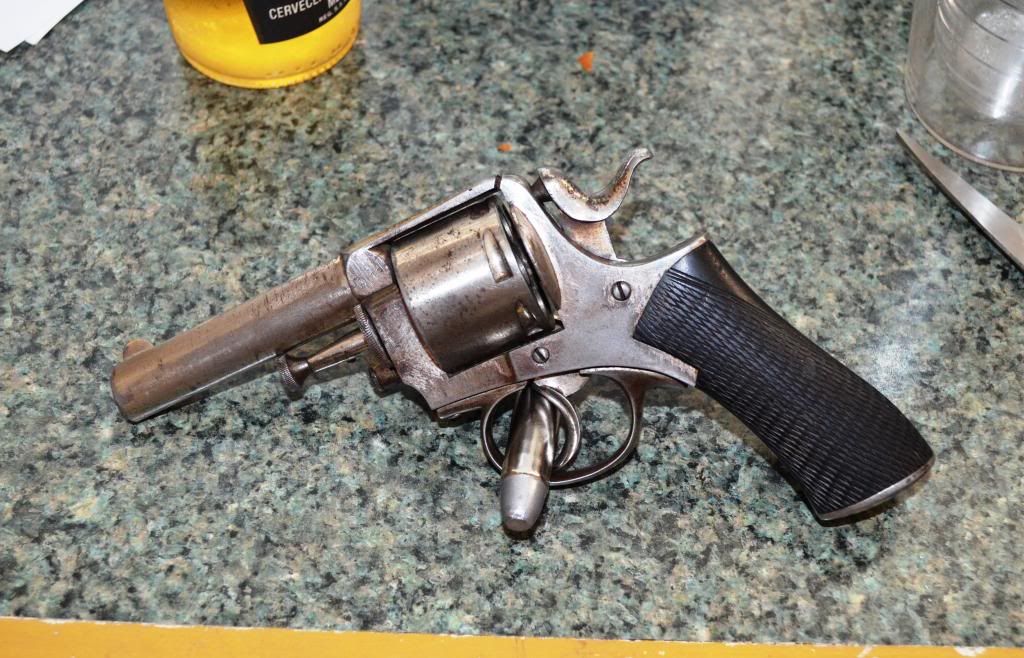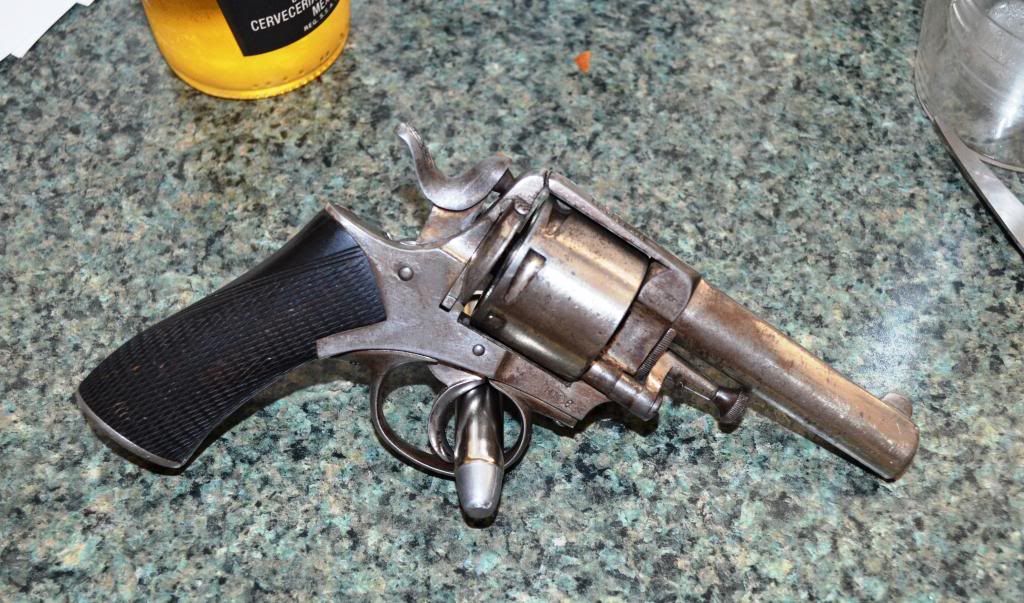Picked this thing up on the Gunbroker for 25.00 plus shipping (ten bucks)
The revolver is marked "British Constabulary"
The revolver is complete and appears to function pretty close to normal.
But if you look close at the photo, you can see the crack in the frame just forward of the hammer.


I do not intend to get it back to shootable condition but I want to get a good gunsmith to repair the frame.
It is a .38 which was build sometime around 1880.
The revolver is too small for the .38 Special case but in terms of diameter the case fits perfectly.
This is double action revolver which has an odd way of locking up. When the hammer is drawn back to full cock the hand and bolt lock the cylinder in battery. When the trigger is pulled to fire the weapon, the cylinder can move freely until the trigger is pulled back to about the half cock position. Then the bolt moves into the frame opening and stops the cylinder in battery. It may be that the half cock detent on the hammer is rubbed off. But the revolver really acts confidently.
The revolver is marked "British Constabulary"
The revolver is complete and appears to function pretty close to normal.
But if you look close at the photo, you can see the crack in the frame just forward of the hammer.


I do not intend to get it back to shootable condition but I want to get a good gunsmith to repair the frame.
It is a .38 which was build sometime around 1880.
The revolver is too small for the .38 Special case but in terms of diameter the case fits perfectly.
This is double action revolver which has an odd way of locking up. When the hammer is drawn back to full cock the hand and bolt lock the cylinder in battery. When the trigger is pulled to fire the weapon, the cylinder can move freely until the trigger is pulled back to about the half cock position. Then the bolt moves into the frame opening and stops the cylinder in battery. It may be that the half cock detent on the hammer is rubbed off. But the revolver really acts confidently.
Last edited:
